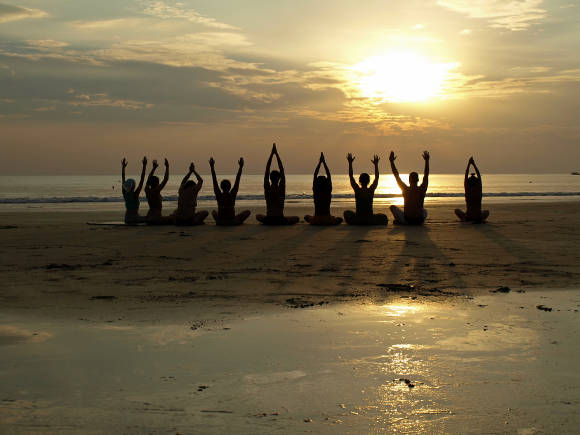If you've gotten into the habit of practicing yoga, and want to do something deeper than just regular yoga routines and the occasional workshop, then you might want to consider going into a certified yoga teacher training course. Contrary to what the name implies, it is not a requirement that you teach after you complete the certification program, although many are surprised to learn that they can and do get the urge to become an instructor after the training. But it also deepens your understanding of yoga, and helps correct bad yoga habits early on.
What is Yoga Teacher Training?
Yoga teacher training packages come in a variety of forms. Some of them are 200 hours, which is the minimum requirement as stipulated by the Yoga Alliance, an internationally-recognized certification body that provides accreditation for new teachers. If you want to deepen your training even more, you can go to the next level, which is 500 hours. Some programs are in-studio or at the local ashram, while others take place in faraway locations like in India, as a sort of yoga retreat. Regardless of where you take your course, the idea of being shut off from the rest of the world is key so that you can really focus on yourself and the training.
Who Can Take It?
As such is the case, you don't even necessarily have to have years of yoga training behind you to undergo the course, although it definitely doesn't hurt. As long as you're spiritually determined and in decent physical shape, you should be qualified to sign up for yoga teacher training, regardless of age, body type or background. Just remember that the course is incredibly intense, to the point that it literally becomes your life for the next month or so. The challenge is a combination of mental ability as well as physical endurance, and in many cases, a breakdown or two shouldn't come as a surprise, so it is beneficial to be steadfast in your convictions that this is what you want to be doing.
What Goes on During Yoga Teacher Training?
During the course you are expected to memorize Sanskrit words and their translations, including names of poses or asanas, of which there are hundreds. You are also taught how to put together sequences in Vinyasa-type classes, choreographing them in such a way as to minimize risk of injury while maximizing the benefits the body can receive in an intelligent, logical manner. You will learn, over the next 200 or so hours, every relevant part of the anatomy — how to properly engage them in each pose, how to prevent damaging them and how the muscles, joints and bones work together in harmony. You will also learn about organ function and their role in yoga training, such as what pose is particularly good for which system. In addition to that, you will get a full-blown lesson in centuries-old Yogic philosophy, from the Bhagavad Gita to the Yoga Sutras of Patanjali and many more. You will deepen your knowledge of chakras or energy points, bandhas or energy locks, dristhis or concentration points, pranayama or breathing techniques and the multitude other yogic concepts and techniques. Your yoga teacher will train you in spotting common errors that students make and how to correct them, and in so doing, you will become more conscious of how to apply these adjustments into your own yoga routines, so that the proper way of doing them becomes more natural to you.
All in all, it's a tough deal, and not at all cheap. But if you are, or want to become, truly serious about your practice, then yoga teacher training could be a very good investment. For one, you will become qualified to become a yoga teacher, which is a great back-up plan or sideline job to have under your belt. But more importantly, it is a fantastic opportunity for self-improvement that you really cannot get with even a daily practice or an intense self-study course.


